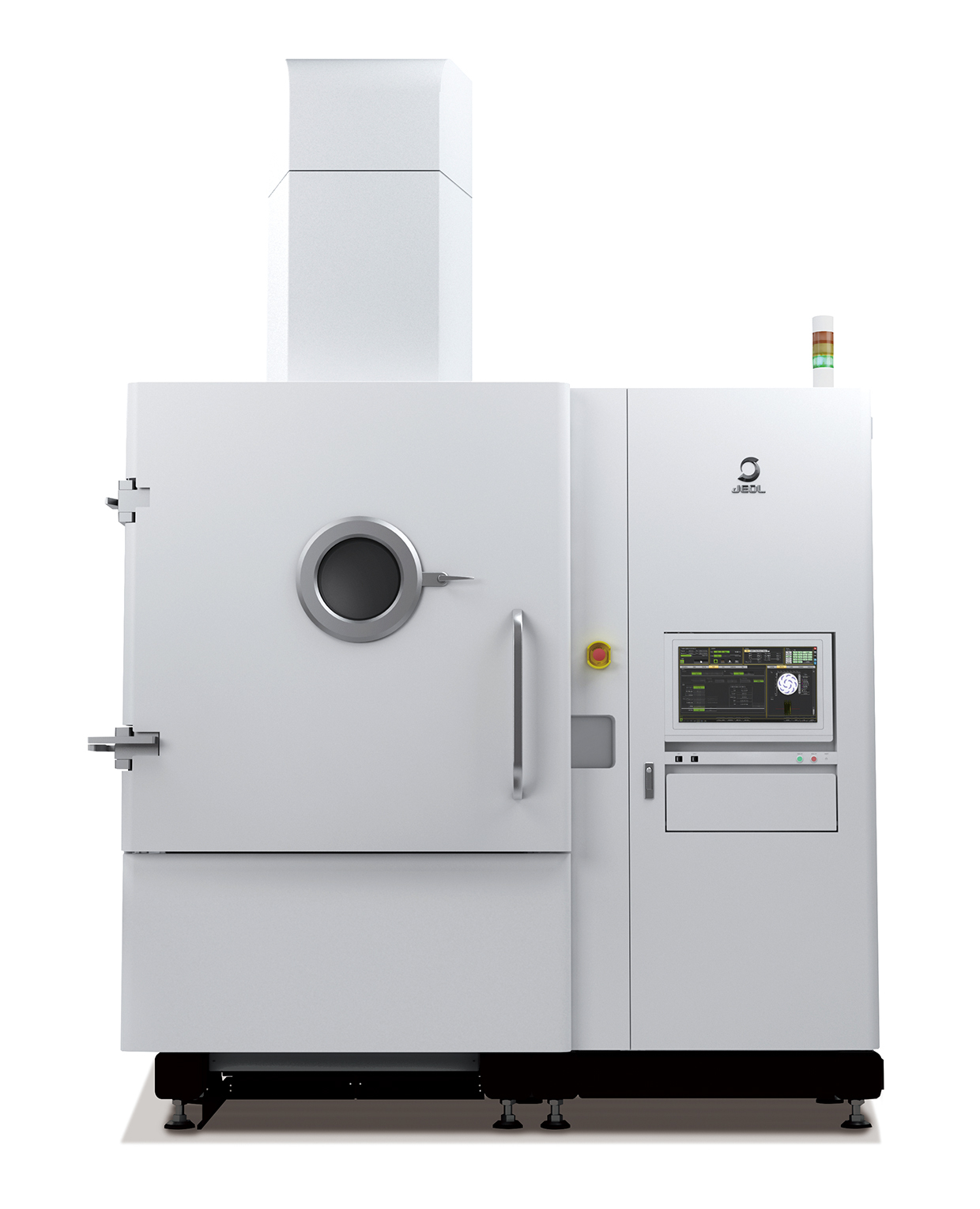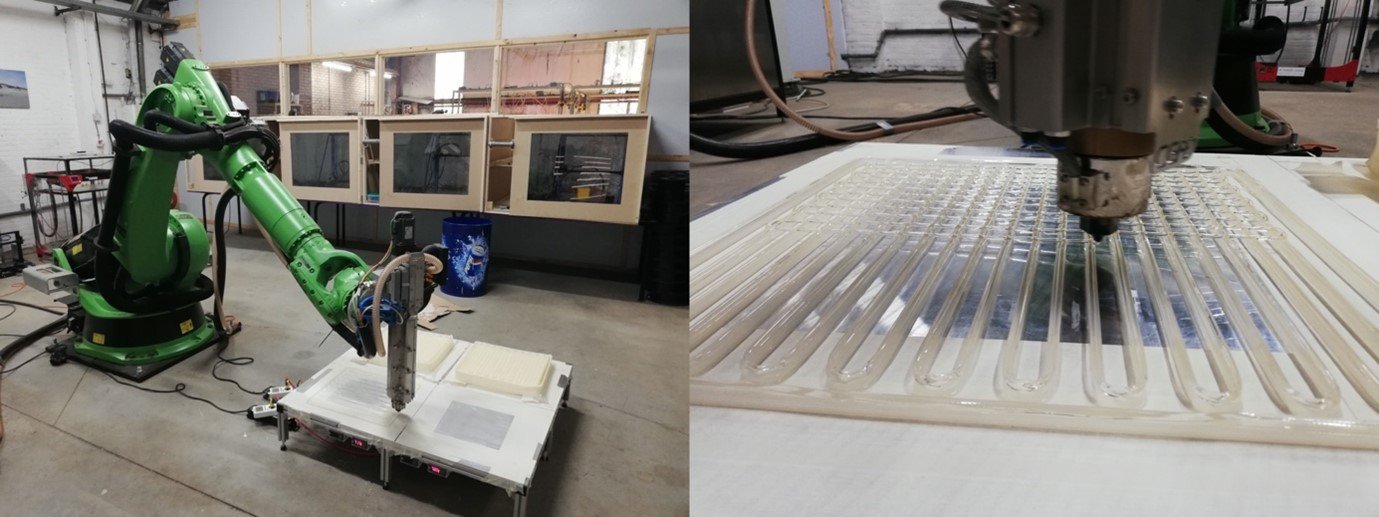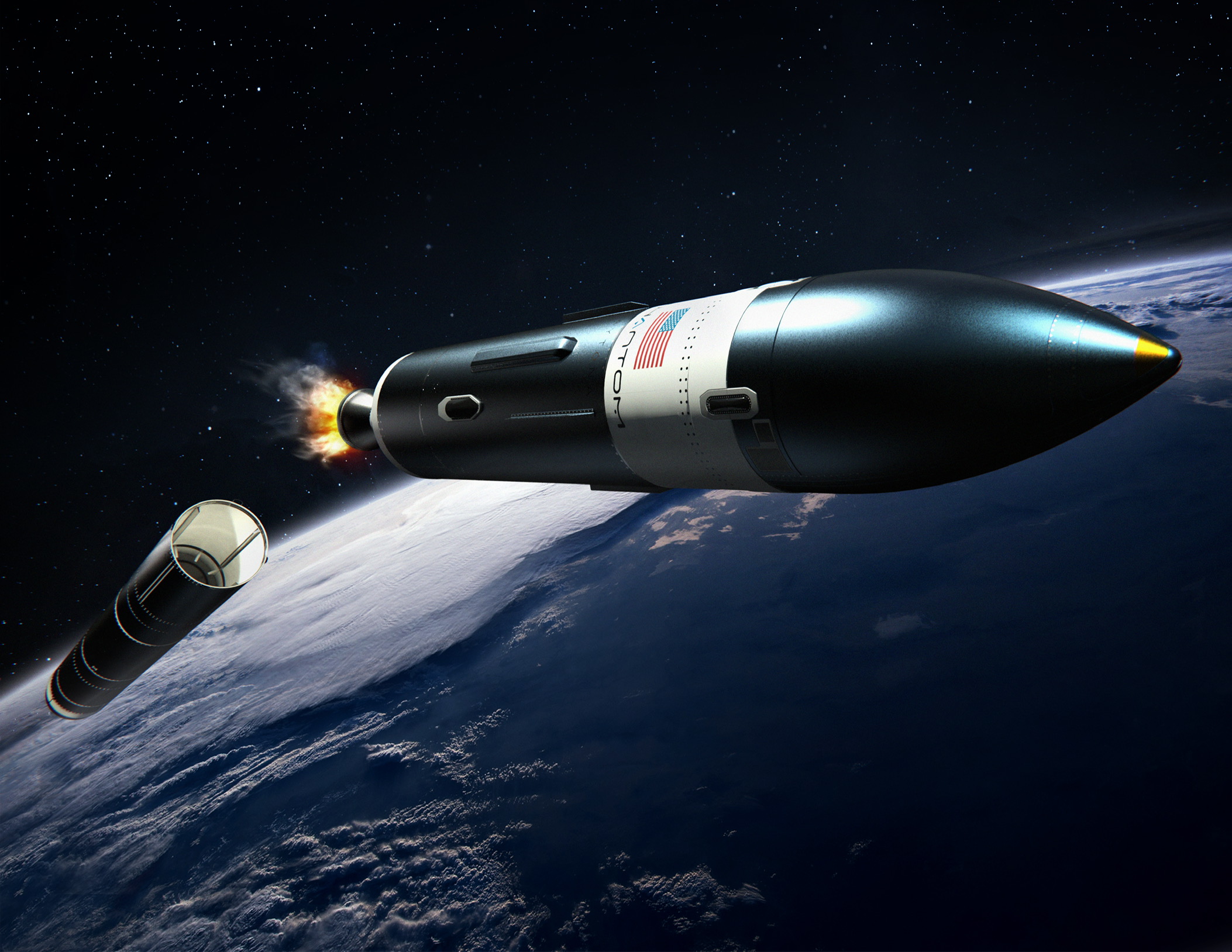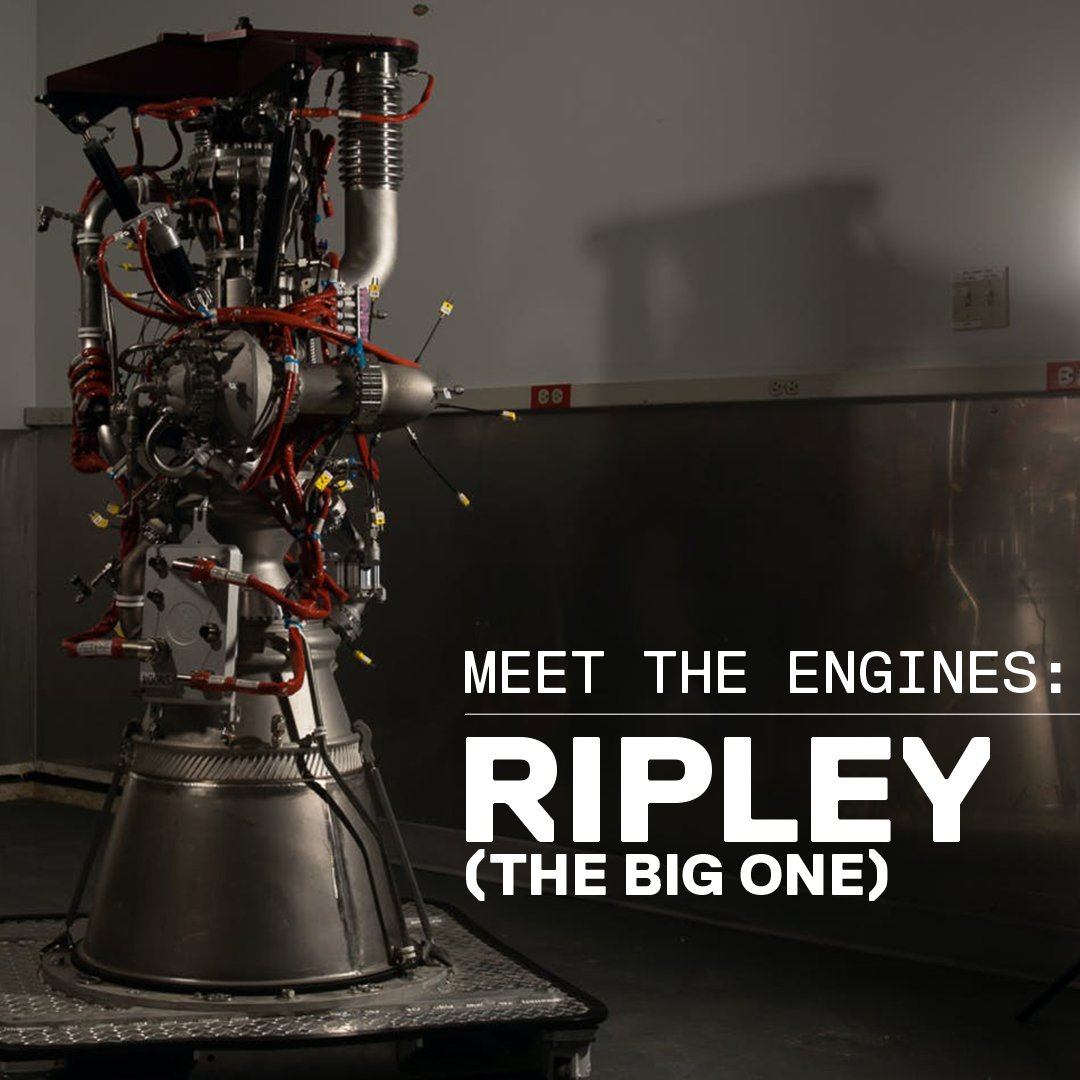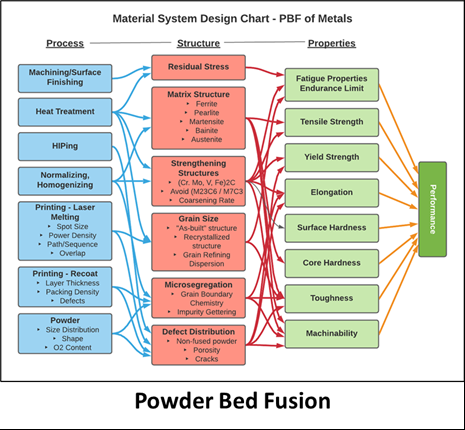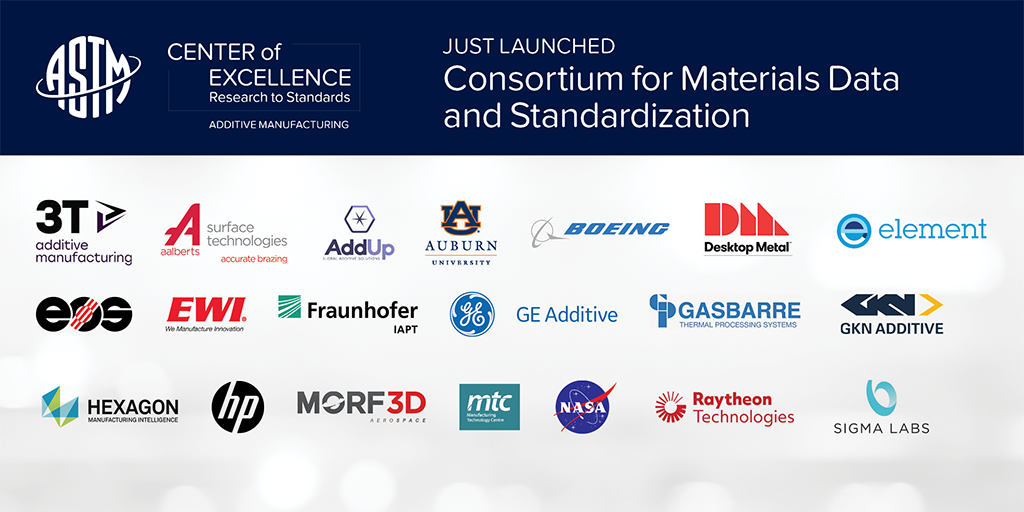3DPrint.com | The Voice of 3D Printing / Additive Manufacturing |
- 3D Printing News Briefs, May 21, 2022: Fictiv, Shellfish Reefs, and Oil & Gas
- 2022 Met Gala: 3D Gowns from Iris Van Herpen Steal the Spotlight
- EPlus3D 3D Prints Train Brake Disk in 631 Hours
- MakerVerse CEO Markus Seibold on His One-Stop-Shop for Industrial 3D Printing
- Belgian Consortium Tries to Make Better Electrical Motors With 3D Printing
- DyeMansion Teases Powerfuse S PP adds Lubrizol TPU
- 3D Printing Tungsten Carbide: Kennametal is GE Additive Latest Metal Binder Jetting Partner
- Over 200 Ursa Major 3D Printed Engines to Power Phantom Space Rockets
- ASTM Launches Consortium for 3D Printing Materials Data & Standardization
- BEAMIT Expands Metal 3D Printing Fleet with GE Additive’s M Line
| 3D Printing News Briefs, May 21, 2022: Fictiv, Shellfish Reefs, and Oil & Gas Posted: 21 May 2022 05:00 AM PDT The industry continues to grow, which sees new personnel at additive construction firm ICON and metal 3D printing firm, XJet. Meanwhile, technologies from other industries are being applied to 3D printing, such as electron beams for advanced microscopes and electrochemical machining. We’re also witnessing the wider adoption of additive manufacturing (AM) in oil and gas, with Ocyan’s use of Spare Parts 3D. France’s Multistation is adding new technologies to its reselling portfolio. Oyster and mussel reefs are gaining assistance from 3D printing. And San Francisco startup Fictiv has raised another $100 million. ICON Announces New CFOAdditive construction firm ICON has taken on a new chief financial officer, Tom vonReichbauer, describing the hire as necessary for its next stage of growth. VonReichbauer comes from such leading tech companies as Google, Nest, and Tesla. Before joining ICON, he worked as CFO of residential solar company Sunrun. Prior to that, he was CFO and chief business officer of Nest, as it was acquired by Google. ICON has so far raised nearly a half-billion dollars, working closely with such government agencies as the Department of Defense and NASA. JEOL Introduces New Electron Beam 3D Printing to North AmericaJapanese electron beam company JEOL (TYO: 6951) first introduced the world to its electron beam powder bed fusion technology at Formnext 2021. At RAPID+TCT 2022, the company brought its JEOL JAM-5200EBM electron beam 3D printer to North America via JEOL USA. As covered in a previous article and will be covered in an upcoming interview, the platform has a cathode that survives longer than any other electron beam 3D printer on the market. It also improves quality through the use of its e-shield feature, a pre-heat scan strategy, active bam spot and focus shaping, and more. XJet Hires VP Sales North AmericaXJet too is taking on new staff, in this case a new VP of Sales for North America, Harry Danford. At RAPID + TCT, the Israeli firm provided tours of its U.S. customer, the first client to own a metal 3D printer from XJet. Now, the company is demonstrating its commitment to the U.S. market even further with the hire of Danford. He brings with him 10 years of experience in business development and sales in the 3D printing industry. Voxel Innovations: Postprocessing Additive Parts via ElectrochemistryVoxel Innovations, a small firm from Raleigh, North Carolina, introduced its pulsed electrochemical machining (PECM) technology, a non-contact, non-thermal chemical machining process for finishing metal parts. This includes refractory alloys and nickel superalloys. Because there is no friction between the tool and the workpiece, it can be used to post-process metal 3D printed parts with thin-walled features. PECM works works by running a charged electrolytic fluid between a very fine gap between the tool and workpiece, and performing a controlled “rusting” of the metal, dissolving it into the desired shape. Voxel Innovations has worked with the Air Force and Navy and could become an important player in the additive space. Brazilian O&G Giant Ocyan Partners with French Spare Parts 3D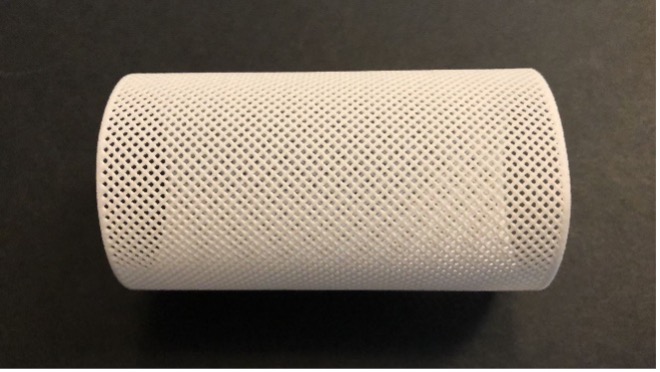 A 3D printed spare part for Ocyan, selected using Spare Parts 3D technology. Image courtesy of Spare Parts 3D. Brazilian oil and gas giant Ocyan worked with French 3D printing firm Spare Parts 3D to develop a digital inventory for its components. Over the course of 11 weeks, Spare Parts 3D applied its DigiPART software to analyze 17,000 spare parts, without any 3D files, to determine what components would be most suited for additive. Trained on over 250 000 parts from 2,000 categories and 7,000 pieces of equipment from the oil and gas industry, Spare Parts’ machine learning algorithms were applied to Ocyan’s ERP/PLM data. Based on such characteristics as lead time reduction, minimum order quantity optimization, and cost reduction, the software selected 11 percent of these parts, or 1,886 SKUs. From this, the company selected its first part to 3D print and has plans to select other parts in the future. Multistation Adds Vshaper and Axiome Robotic Solutions with MeltioIn other French news, the leading French additive reseller, Multistation SAS, is adding more unique technologies to its systems portfolio. The latest include Axiome Robotic Solutions with Meltio Engine directed energy deposition heads, as well as the VSHAPER 500 PRO high-temperature polymer 3D printer. While the former is a low-cost, robotic method for DED metal 3D printing, the latter can process such materials as PEEK through the use of dual print heads capable of reaching up to 450°C. Researchers to Restore Shellfish Reefs with 3D PrintingMore researchers are applying additive to the restoration of ocean ecosystems. This time, NIOZ and Utrecht University have partnered to aid mussel and oyster reefs in the Wadden Sea of the Netherlands. They will be 3D printing artificial reef structures made from biodegradable material that can decompose once the sea creatures are able to settle naturally on them and are large enough to form their own reefs. Fictiv Raises $100MBay Area startup Fictiv announced the closing of a $100 million Series E funding round, bringing its total investment to $192 million since its founding in 2013. The company acts as a hub for digital manufacturing, providing a place to design, price, and order components made with 3D printing, CNC machining, injection molding and urethane casting. So far, the company has enabled the production of over 19 million mechanical parts across more than 3,000 product categories. Fictiv aims to use the funds to further its technology for de-risking the supply chain. The post 3D Printing News Briefs, May 21, 2022: Fictiv, Shellfish Reefs, and Oil & Gas appeared first on 3DPrint.com | The Voice of 3D Printing / Additive Manufacturing. |
| 2022 Met Gala: 3D Gowns from Iris Van Herpen Steal the Spotlight Posted: 20 May 2022 06:30 AM PDT 3D printed fashion has become more ubiquitous over the past couple of years and is no stranger to the Met Gala. However, it's not the only futuristic method being applied to fashion, as 3DPrint.com Senior Editor Sarah Saunders learned while visiting Kornit Headquarters. At this year’s event, designer Iris van Herpen presented four unique gowns that included elements of laser cutting techniques. This year's Met Gala theme was “In America: An Anthology of Fashion," which focused on the grandeur of the Gilded Age. The dress code was Gilded Glamour, where guests were to interpret 19th-century clothing through a modern lens, to which Iris responded vividly. As a pioneer in 3D printed fashion, van Herpen has been incorporating manufacturing technology into the construction of her garments for over a decade. At this year's event, she explored the 19th century through a laser cut lens. Actress and singer Dove Cameron shined in van Herpen's 'Spiral Nebula', a custom, all-white gown layered in organic structures that reference actual spiral nebulas in the cosmic world. The designer's dress fit the Gilded Glamour theme by drawing upon embroidery of the 19th century, which was then turned into fine yarns that were hand-embroidered outwards from the tips of the sleeves and hem. The gown explored the intersection of traditional techniques with current modern-day technology. Layers of white fabric were combined with recycled mylar and then laser cut and stitched onto a template and integrated into the dress. The dress took over 600 intensive hours of work by ten people. In an interview with Vanity Fair, Dove claimed, "The gilded age was all about using new technology and textiles to make grand fashion, grand design, and cutting-edge designs that no one had ever seen before. I think that Iris and I wanted to carry that same intention into tonight and have a modern and futuristic take on the Gilded Age." Supermodel and activist Winnie Harlow arrived on the red carpet wearing van Herpen's “Transmotion" dress, a flowing white and black gown. Exhibiting flowerlike features, the gown included white petals sticking out at the top, and a front embellished with laser-cut black branches as an homage to Japanese American artist Ruth Asawa. In addition, black crystalline filaments fanned out of the dress, representative of a flower's pollen-producing stamen. Van Herpen originally debuted the dress digitally during Paris Haute Couture Week Autumn/Winter 2020. Harlow paired the dress at the Met Gala with the "Mind in Motion" kinetic crown, produced in collaboration with artist Casey Curran. Swedish creative director and fashion icon Fredrik Robertsson (who was often mistaken for actor and musician Jared Leto) wore van Herpen's Quantum jumpsuit on the red carpet. In an interview with Klarna, van Herpen stated that she drew inspiration from the transformation and movement of her dance background. She said, "Everything that I do is about transformation, is about movement. It's about extending the body into this transformative spirit. This comes from my dance background when I was dancing. It was really my focus on that transformative motion on how fluid we are as human beings." Made with sustainability in mind, the Quantum jumpsuit was crafted from upcycled fabric. The material was first digitally printed and then heat bonded to recycled mylar. The "feathers" on the dress were made from 3D laser cut panels and then attached to the garment. The jumpsuit took over 750 hours to create by 12 people. Actress, dancer, and musician Teyana Taylor dazzled the red carpet wearing van Herpen's "Mythosphere" gown. The dress consisted of purple hues of tie-dyed silk with a cutout bodice and puffy sleeves. Her gown was accompanied by a futuristic headpiece of sterling silver dubbed the "Psyche" mask. The mask was made in collaboration with van Herpen and Malakai. Some of Malakai's other couture pieces, such as the Lemuria headpiece, combine digital technology with handcrafted artistry. Since her first 3D printing debut in 2010 with the Crystallization 3D printed shirt, van Herpen has continuously innovated, creating 3D printed pieces for renowned celebrities, including Grimes, Beyonce, Lady Gaga, and more. While it's common to see 3D printing being utilized in the fashion industry as a new way to perform old techniques, van Herpen combines the technology with traditional methods to create innovative designs and worlds. In an interview with Klarna, Iris stated, "My designs have evolved throughout the years in different ways… The techniques have evolved so radically that the transformation and movement is now literally embodied within the techniques rather than it being an inspiration… I think a big part of the experimental process is also based on having an idea that is not realistic now, but you come back to it many years later, and then it actually works. It's about bringing different people and disciplines together and making the impossible happen…. The greatest motivation behind my work is about widening the vision towards what fashion is, what fashion can be, and where it can go towards." And that's exactly what she did at this year's Met Gala. The post 2022 Met Gala: 3D Gowns from Iris Van Herpen Steal the Spotlight appeared first on 3DPrint.com | The Voice of 3D Printing / Additive Manufacturing. |
| EPlus3D 3D Prints Train Brake Disk in 631 Hours Posted: 20 May 2022 06:00 AM PDT Chinese Powder Bed Fusion company E Plus 3D is on the move. The company at first made printers that were kissing cousins close to some more famous ones from other more established brands. Then they entered the market with a much larger and much taller system meant for aerospace. It is clear that E Plus 3D is on its way to making much more sophisticated printers in line with China’s goals of mastering the most influential and advanced technologies in the world. You can read more about this in our extensive Hug the Panda series. Now the company´s printers have been used to make a train brake disk. There has been a lot going on around railway and train parts with polymer materials being qualified for use in rail, an alliance around rail 3D printing springing up, and a lot of interest in 3D printing for MRO for rail happening globally. We used to focus on cars and planes, but the trains in trains, planes, and automobiles are now becoming a focus area. The train MRO market globally is worth tens of billions of dollars, so the opportunity is there. But, rail parts are large, heavy, and have to last 20 or 30 years. Rail has its safety and qualification rules as well as its own way of doing business. Rail is not going to be easy, but it could easily be one of the largest verticals in 3D printing if we get it right. So E Plus 3D’s news is encouraging as well. The company mentions that high speed trains can reach speeds of up to 350 Kph, and they produce huge forces when braking with the brake disk and pads heating up to 900°C. They also say that continual operation in harsh weather and climate is important. A client 3D printed brake disks with the qual laser EP-M650 has a 655 x 655 x 800 mm³ build volume. They are printed with the material 24CrNiMo, which is often used for brake disks. The material has a high ultimate tensile strength and good thermal stability. Other studies point out that traditional manufacturing takes a long time to make these break disks in that material. A series of studies have come out of China looking at this material, and things like fatigue strength, microstructure, and defects, specifically for brake disks. There are a surprising amount of studies on this material, given that the only mentioned application is rail brake disks. We will have to conclude that given China’s world beating high speed rail network, this is just a huge opportunity for the country. The brake disk measured 648 × 90 mm and was printed with a layer thickness of 50 μm. The total print time was a whopping 631 hours. That’s a 26-day build. That’s a build that you don’t want to go wrong mid way through. And if we think that one through, I’m not entirely sure that there is a business case for this part currently. I mean, it would be like a $100,000 part? But, super cool nonetheless and great that they can print that long without errors. And If this is a business, it will be very good for us. Later on, the team decided to iterate and make a new brake disk design. The logic for printing a rail brake disk is that some break disks suffer from “microcracks” and are sensitive to water which negatively impacts break performance. Typically powder metallurgy is used to make the disks. Depending on the brake disks, they’re made with different processes, but a popular one is the sintering under pressure molding process. Since we use powder to sinter metals, this makes the resulting parts and needs qualities quite close to what powder bed fusion is outputting already. As a result, 3D printing has a better buy to fly and may produce fewer defects. At the same time, the company says that different shrinkage factors mean that parts may be coarser and less compact than they should be and that this, in turn, degrades mechanical properties. The company hopes that these mechanical properties can be improved while saving weight. They also hope to design the disk so that heat dissipation improves. Interestingly the company managers print a wear-resistant layer onto the part. They also expect that in the future, it will have a lower cost and be made much faster than with traditional processes. It may even be able to be used for longer as well. I think that this is a super ambitious project. Ultimately we’d need to really improve throughput for this to make economic sense. But, if EPlus3D can chip away at this problem over time, then it will become a very exciting application. The post EPlus3D 3D Prints Train Brake Disk in 631 Hours appeared first on 3DPrint.com | The Voice of 3D Printing / Additive Manufacturing. |
| MakerVerse CEO Markus Seibold on His One-Stop-Shop for Industrial 3D Printing Posted: 20 May 2022 05:30 AM PDT 3D printing networks have been a feature of the industry for some time. However, like additive manufacturing (AM) as a whole, they may not have been up to the standards of large-scale industrial companies. MakerVerse is a Siemens Energy and Zeiss backed startup that aims to change that and it has just launched the first version of its one-stop-shop additive platform. MakerVerse describes itself as "a one-stop shop that provides fast and reliable access to advanced on-demand manufacturing services." Established as a joint venture between Siemens Energy, ZEISS, and capital investors like 9.5 ventures, the firm offers an end-to-end digital platform for manufacturers to source 3D printed parts from a global network of certified, industrial-grade suppliers. By bringing in experience related to mass manufacturing critical end parts for Siemens Energy, MakerVerse believes it has what it takes to apply this expertise to AM as a whole. We spoke to CEO Markus Seibold to learn what differentiates his platform from other 3D printing networks and services in the industry. Prior to establishing the firm, Seibold who has been with Siemens Energy for over a decade, where he began as Head of Business & Technology Development for Siemens Gas Turbines. He worked his way to Vice President Additive Manufacturing as the industrial giant acquired its U.K. additive service provider, Materials Solutions.
Specifically, MakerVerse offers players like Siemens Energy access to new technologies, while also benefiting from a digital business model that offers a simple user interface, fast turnaround and lead times, and the ability to offer spare parts on demand on a global scale. One of the core value propositions of MakerVerse to its industrial customers is that MakerVerse will continuously expand its offering of technologies, materials and related post-processing and quality assurance methods. Customers have access to this broad offering at industrial-grade quality without the need to invest their own CAPEX or the need to qualify multiple AM services providers for their distinct needs.
MakerVerse benefits from being an asset-light platform, in that it doesn't own its own printers but works with a distributed network of certified industrial manufacturers. However, the firm aims to differentiate itself from other distributed 3D printing networks through the standards it puts in place with its suppliers. Rather than becoming the platform with the most AM providers, the startup works specifically with sufficiently large suppliers with sufficient experience in AM that are able to carry new investments into new technologies. According to Seibold, this means that MakerVerse will be a premium industrial supply chain with high quality suppliers. Also unlike other distributed 3D printing networks, MakerVerse does not operate on a classical matchmaker system. This isn't Airbnb, in which a client might look at a supplier, see the pros and cons, and decided to move forward with a service bureau. Instead, a customer orders parts with MakerVerse, who selects the right production partner. This partner may not necessarily be disclosed, but its quality will be guaranteed. So far, MakerVerse already has a number of European additive suppliers. These are businesses that have more than 10 years of experience with the technology, double-digit revenues, and comply with standard industry certifications. MakerVerse ensures that they conform with its delivery specifications in terms of material data and delivery requirements.
One client that MakerVerse can name publicly is obviously Siemens Energy. In turn, we know that Materials Solutions is one of the suppliers. However, Seibold was quick to point out that the platform isn't focused on any one segment, such as Energy or Oil & Gas only. Multiple industries where 3D printing parts on demand has high value are a candidate. In automotive, for instance, trucks and buses at the end of their lives, as well as classic cars, could benefit from 3D printed spares. There's also industrial tooling, jigs, and fixtures.
As MakerVerse begins its journey, it is focused on meeting its customers' needs, from advanced part specifications to meeting quality requirements. However, as it moves into a growth phase, the team will deliver spare parts on demand, serial production, and possibly complementary manufacturing technologies, such as CNC and injection molding. It may also explore such ideas as how to integrate the platform with solution providers and services providers which support customers up-stream in identifying potential applications for additive manufacturing. There are already digital manufacturing providers out there that already serve their customers around the world. However, as the AM industry grows, it is being increasingly populated by industrial giants like Siemens Energy, who not only bring with them a lot of pull but also industrial quality associated with years of global manufacturing. So, while startups like Xometry and Hubs already disrupted traditional supply chains with new digital, distributed production models, MakerVerse may just disrupt these disruptors. The post MakerVerse CEO Markus Seibold on His One-Stop-Shop for Industrial 3D Printing appeared first on 3DPrint.com | The Voice of 3D Printing / Additive Manufacturing. |
| Belgian Consortium Tries to Make Better Electrical Motors With 3D Printing Posted: 20 May 2022 05:00 AM PDT A Belgian consortium consisting of Ghent University, KU Leuven, and research organization VITO has been working on the Additive Manufacturing for Electrical Machines (AM4EM) project. They want to make more energy-efficient electrical motors. Startup Additive Drives along with several companies in the automotive supply chain are taking a hard look at 3D printing electrical motors, windings, and motor components. This can have a much broader impact than cars though with many motors finding their way into bikes, industrial equipment, and many other things that populate our daily lives. The group is specifically looking at 3D printing stators and rotor cores. In electric motors typically the stator has magnets in it while the rotor has windings in it that carry current. There is an air gap in between the two while a bearing lets the rotor spin smoothly inside the stator. The windings are wound in different directions and current is passed through them. The magnets exert forces on these windings in different directions which creates torque causing the rotor to spin while the current is applied. There are millions of DC and AC motors in the world and they can be super small or the size of rooms. Generally, people have optimised the parts, geometries, and designs of these things quite well over the past 100 years. What the trio of Belgian research groups is trying to do is to apply multi material 3D printing to motors. With multi material 3D printing, we can deposit different materials, mix them, and create different configurations of these materials or layers with different materials in them. They hope that through doing this they can come upon methods to make more efficient motors that optimise the magnetic fields or forces at play in ways that have not been possible so far.  A copper print by VITO Vito has been researching 3D printing since 2006 and is particularly interested in printing pastes using ceramics, metals and polymers. One sign of progress is that the team has paste printed pure copper, demonstrating the “Micro-extrusion 3D-printing of copper paste has led to printed parts without printing defects, a relative density of 95 – 99% and an impressive electrical conductivity of 90 – 102% IACS [International Annealed Copper Standard].”  A Fe-Si print by VITO The team has also printed a Fe-Si (also called electrical steel, often used as a motor core material). Now the team is working on printing parts for the core where ceramic is printed in one layer followed by a Fe-Si layer. For now, they have significant warp and shrinkage but they hope to be able to optimise cores.  A bound metal filament copper print by the KU Leuven Whereas VITO focused on paste extrusion, KU Leuven is working on FDM for metal and ceramics similar to the bound metal process used by Desktop Metal, Nanoe and Markforged. Here they also tried to mix materials in one print. Ghent University in turn is working on the design optimisation of the motors to enhance magnetic flux. The trio hopes to increase the energy efficiency of their motors by 5% and have a power density increase of 40% at the end of their project. I really like this approach. Given the sheer volume and importance of electrical motors, a small improvement will potentially have a big impact. Now of course if we just have a marginal impact then it will be tough to impossible to get battery makers to switch to our technology. If the impact is significant enough we’re still going to have an advantage that could cover the trouble and costs of adopting a new production technology. What is also potentially very fruitful is that the filament process and paste process being used here are inexpensive. They could both be very cost effective technologies to implement at a very large scale. They’re finicky at the moment but do show promise. They would need a lot of automation especially since they need a separate debunking and sintering step. But, if this is overcome, then they could very well make quite cost effective parts. Images courtesy of VITO, KU Leuven and Ghent University. The post Belgian Consortium Tries to Make Better Electrical Motors With 3D Printing appeared first on 3DPrint.com | The Voice of 3D Printing / Additive Manufacturing. |
| DyeMansion Teases Powerfuse S PP adds Lubrizol TPU Posted: 19 May 2022 07:00 AM PDT German post processing company DyeMansion announced that it is releasing the Powerfuse S PP at the Rapid+TCT Detroit event. The Powerfuse S is the company´s vapor smoothing solution. This uses a food contact approved vapor under pressure to completely smooth parts. Vapour smoothing is an exciting technology because mechanical smoothing is difficult, especially for flexible or soft parts. DyeMansion now has made a PP version of the machine. Polypropylene is a tough, soft, and flexible material that could be ideal for braces, seats, sports equipment, and many other applications. PP is fast growing in 3D printing in material extrusion, especially in powder bed fusion, which is DyeMansion’s bailiwick. The Powerfuse S PP should make it easier to finish PP parts on an industrial scale. This lowers the cost per part by eliminating handling and manual labor. At the same time, it makes human errors less likely and increases the repeatability through the uniform processing and finishing of parts. 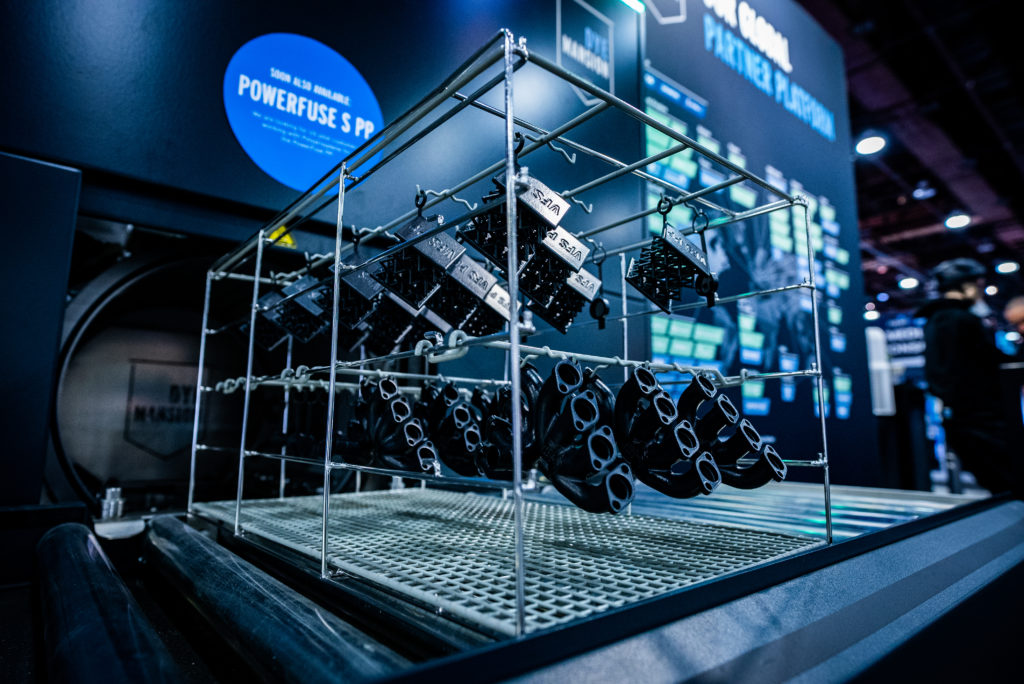 DyeMansion Powerfuse S PP parts at Rapid 2022. Image courtesy of DyeMansion. The Powerfuse S PP is currently in a pilot phase and will be unveiled at Formnext 2022, starting November 15 in Frankfurt. The company has developed a solvent for the material and tested it with the materials from HP, BASF, EOS, ALM, Prodways, AM Polymers, and Covestro. DyeMansion CEO Felix Ewald says,
Lubrizol Estane 3D TPU Available for the Powerfuse SFurthermore, the company has released the Lubrizol Estane TPU material, on HP Multi Jet Fusion, for the Powerfuse S. The material now has a specific program on the Powerfuse. The company sees the material finding use in orthotics and automotive. One part produced so far is the Quatro Prosthetic Sock by Quorum, where the quarto wearers of prosthetics can dynamically adjust the fit of the prosthetic socket throughout the day to maximise their comfort. 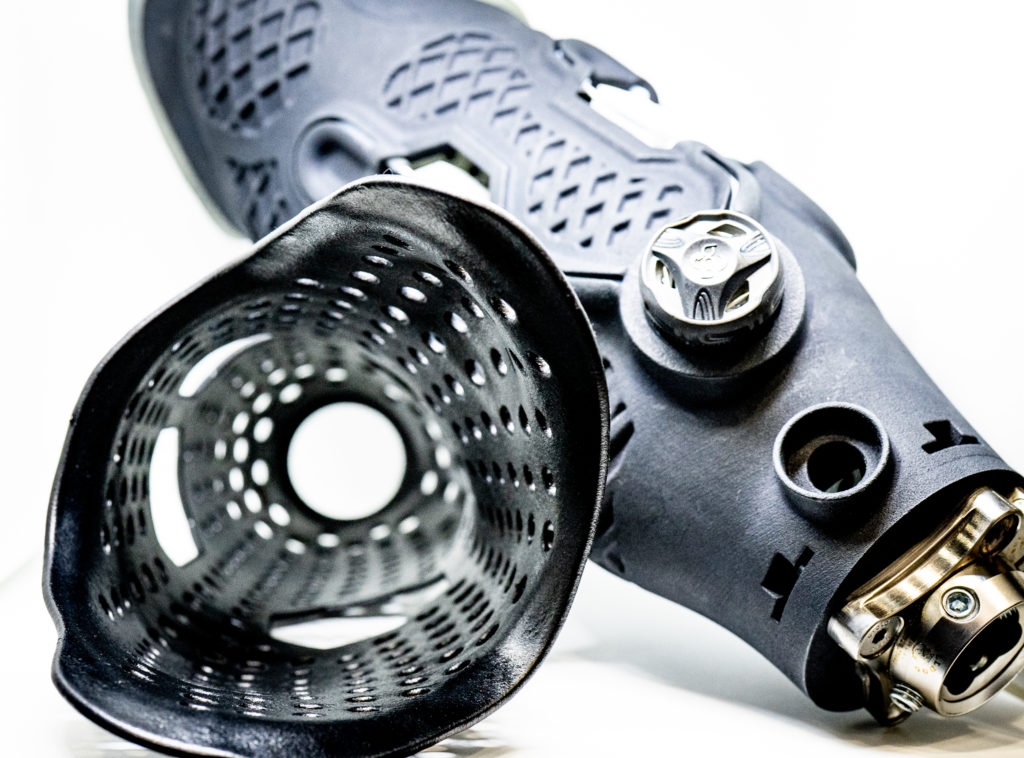 DyeMansion Lubrizol Estane 3D TPU part at Rapid 2022. Image courtesy of DyeMansion. The company will also present a case study on using DyeMansion parts in NASCAR together with Stratasys and has also announced the addition of new resellers in North America. Kai Witter, Chief Customer Officer at DyeMansion, stated,
DyeMansion seems to be building its business and growing its library of materials. By having dialed in process parameters for its materials, the company can get assured results time after time. This means that it is a burden to qualify and test new materials all the time as they come out. But, as long as they keep doing this, users can quickly adopt new materials and print technologies and employ them along with DyeMansion. AMT and PostProcess are also continually releasing new software and settings-based recipes for different materials. This kind of plumbing work may sound a bit boring, but it is absolutely essential for users to get the results they want. Over time, the sheer number of recipes will become an obstacle to new competitors. New entrants will take time to make their own recipes for all available materials. Bit by bit, we can see the established post-processing companies trying to build moats and castles to deter future invaders. The post DyeMansion Teases Powerfuse S PP adds Lubrizol TPU appeared first on 3DPrint.com | The Voice of 3D Printing / Additive Manufacturing. |
| 3D Printing Tungsten Carbide: Kennametal is GE Additive Latest Metal Binder Jetting Partner Posted: 19 May 2022 06:30 AM PDT Since it announced work on its metal binder jetting platform in 2017, GE Additive has been adding major development partners, including Cummins, Wabtec, and Sandvik. The newest addition to GE's Beta Partner Program is Kennametal Inc., as it develops its cemented tungsten carbide materials for 3D printing. With revenues of $2.4 billion, Kennametal (NYSE: KMT) has been supplying tooling and metals since 1938. And while it had been 3D printing prototypes and cutting tools for some time, it wasn't until 2019 that it established Kennametal Additive Manufacturing as a business unit. Through that division, it produces metal powders for powder bed fusion, directed energy deposition, and bound metal printing. The company is particularly known for its cobalt chrome alloy, Stellite, as well as tungsten carbide, which became a part of its additive portfolio in 2021. 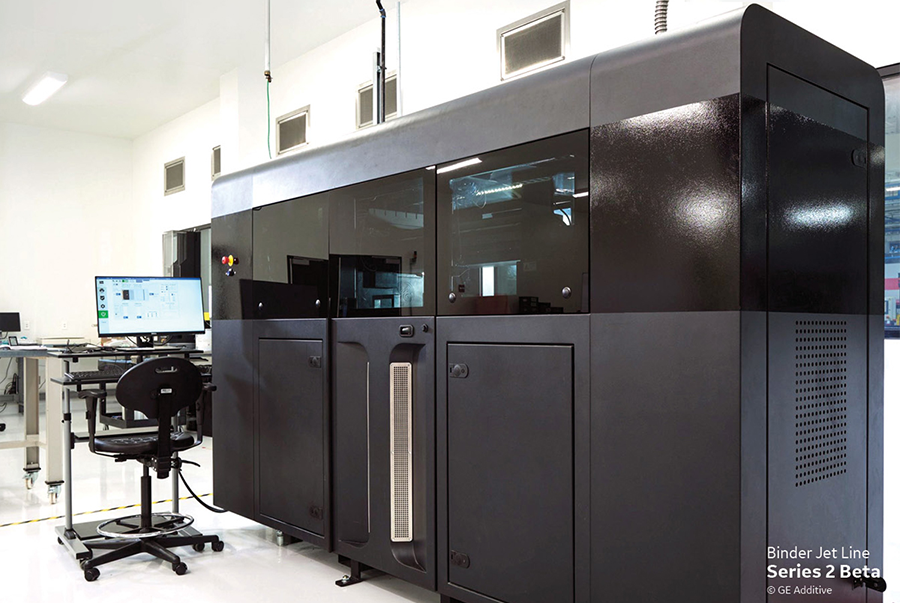 GE Additive’s Series 2 metal binder jet 3D printer. Image courtesy of GE Additive. Now, as a part of GE's beta program, it will further this development. The company will work with GE Additive to scale specific applications for serial production on GE's binder jetting system. Both Stellite and tungsten carbide offer superior wear, heat and corrosion performance that, when combined with the use of additive, mean potentially ideal solutions to difficult problems. Obviously, this means the ability to shorten lead times and increased performance.
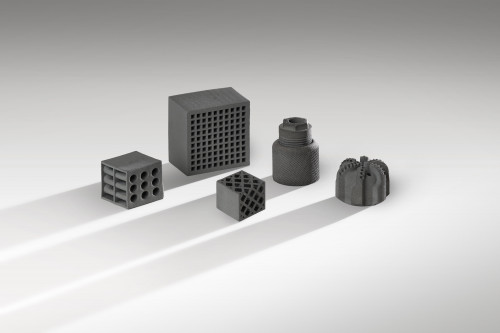 3D printed tungsten carbide parts from Kennametal. Image courtesy of Kennametal. GE works directly with its customers to development its binder jetting technology, according to the company. "By hands-on, we don't mean tinkering or experimenting. We work closely with our beta customers as they develop their own, real-world business cases, applications and parts. To them, it is important that our solution is not only mature and scalable but is capable, complete and aligns to their product innovation strategies and meets production volume needs," said Brian Birkmeyer, product line leader for Binder Jet at GE Additive. With each of its beta partners, GE seems to be targeting a specific vertical: Cummins for power generation and automotive, Wabtec for rail, and Sandvik, possibly for mining. Kennametal, then, would be for industrial applications. Though Sandvik and Kennametal overlap, with both acting as materials suppliers and industrial engineering providers. In fact, just this year, Sandvik announced the development of tungsten carbide for additive. The material is an ideal one for cutting tools, which pairs well with Sandvik's mining business. 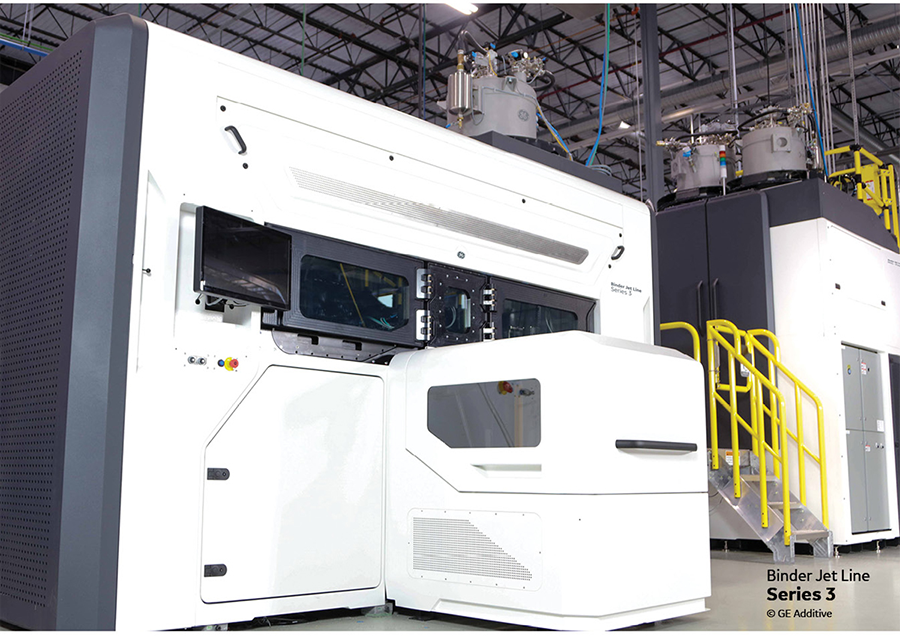 GE Additive’s Series 3 metal binder jet 3D printer. Image courtesy of GE Additive. Though GE said that it would release its H3 binder jetting system in 2021, it has yet to bring the system to market. However, it is likely that the machine will be commercially released by the end of 2022. When it does, it will be one of very few manufacturers of metal binder jetting systems. This includes Digital Metal, Desktop Metal/ExOne, HP, newcomer EasyMFG out of China, and, in the future, Triditive/Foxconn. Though the bound metal segment is small, it is the fastest growing of all additive segments. SmarTech Analysis predicts metal binder jetting and bound metal extrusion to create $54 billion in parts by 2030, according to its recent "Market for Bound Metal Additive Manufacturing 2022" report. The post 3D Printing Tungsten Carbide: Kennametal is GE Additive Latest Metal Binder Jetting Partner appeared first on 3DPrint.com | The Voice of 3D Printing / Additive Manufacturing. |
| Over 200 Ursa Major 3D Printed Engines to Power Phantom Space Rockets Posted: 19 May 2022 06:00 AM PDT Designing and building rocket engines is the sole purpose of Colorado-based startup Ursa Major, and it’s getting noticed. Propulsion capabilities are crucial to widening our gateway to space, and the better they are, the more we can explore. From its outset, company founder and former propulsion engineer at SpaceX and Blue Origin, Joe Laurienti, understood the need to optimize the unique part creation of engines for launch and hypersonic applications. Since then, the startup has focused its attention on cutting-edge 3D printing techniques that helped create and power a new generation of space vehicles. In the last few years, Ursa Major has raised over $133 million in funding over eight rounds––it’s latest being $85 million from a Series C round––and has ramped up production with the recent acquisition of its facilities and property at Berthoud, Colorado. Driven by a budding private aerospace industry, Ursa Major plans to become the Rolls Royce or GE of rocket engines. As a third-party propulsion manufacturer, the startup can focus exclusively on its engines which are already "pushing technology to the edge of possibility," as the company states on its website while lowering the cost and risks of the most expensive, time-consuming, and risky aspect of space launch. One of its recurring clients is Phantom Space, a new space transportation provider developing micro-satellite, small satellites, and propulsion systems launch services. Since its inception in 2019, Phantom has relied on rocket engine supplier Ursa Major and has now announced an order for more than 200 of its rocket engines. The contract includes the company's 5,000-pound thrust Hadley engines, capable of launching orbital and suborbital vehicles, and the new 50,000-pound thrust Ripley engines, which can provide a boost propulsion solution for vehicles intended for space orbit. Ursa Major's first batch of Hadley engines will power Phantom's integrated hot fire test of its Daytona rocket in June 2022 at Spaceport America in New Mexico, with an orbital launch slated for 2023, just three years after Phantom Space was formed, and representing the shortest time to orbital flight on record. The Daytona is a mass-manufactured expendable two-stage rocket that can transport satellites and other space cargo up to 450 kg in mass into Earth orbit and beyond. Much like Ursa Major expects to become the go-to rocket engine manufacturer, Phantom Space wants to be the "Henry Ford of rockets," making enough spacecraft to launch 100 missions a year. The Arizona-based launch company's ambitious schedule for the next decade would help lower access barriers to space through mass manufacturing in the U.S., democratizing access to space, and creating a more affordable space economy, which is basically what most of the new space startups are aiming for. Under the terms of the agreement, Ursa Major will supply hundreds of its Hadley engines in different configurations, including ground test and upper-stage vacuum variants, as well as numerous Ripley engines for planned upgrades to the Daytona vehicle. Phantom will use Hadley and Ripley in launch configurations optimized for cost, performance, time-to-market, and reliability. For example, the first iteration of Daytona will have nine Hadley engines for its first stage and a single Hadley for its upper stage. Alternatively, an upgraded Daytona will debut in 2024 using a single Ripley engine on the first stage with a Hadley engine for the upper stage. While the larger Laguna rocket, set for 2025, will be powered by a combination of Ripley and Hadley engines to increase the mass performance of the vehicle. Commenting on the deal, Phantom Space CEO Jim Cantrell said his company's strategy leverages a mature US-only supply chain to deliver the lowest cost US-built small launch vehicle on the market.
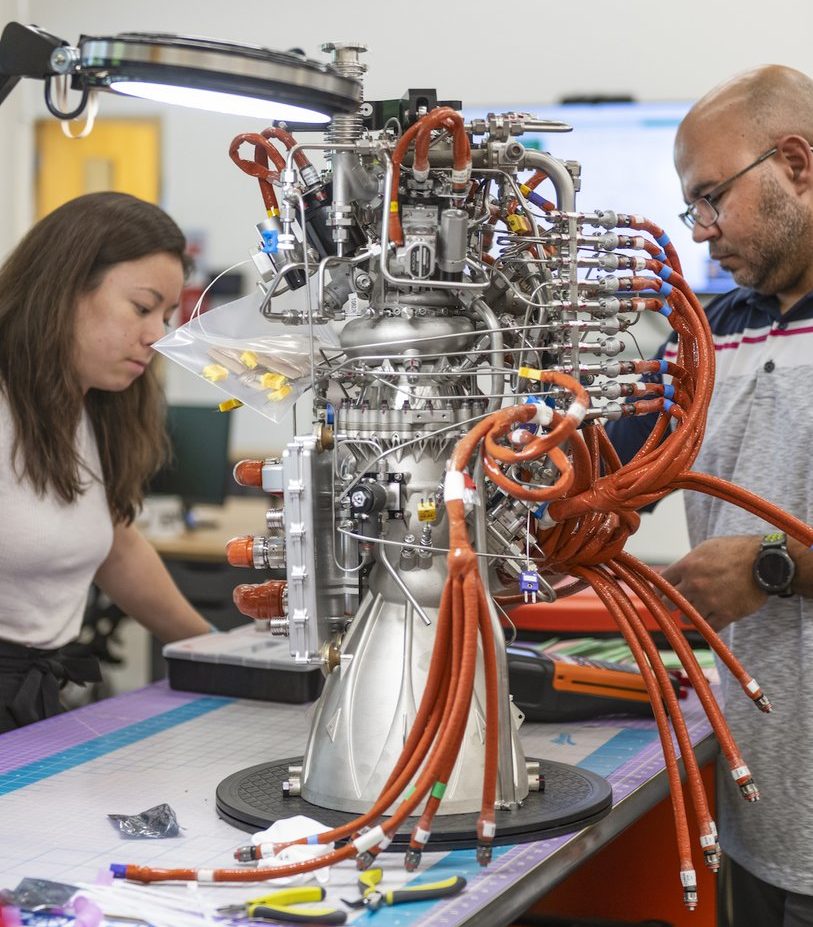 Turbo design engineer Stephanie Gavell (L) and build operations manager Chaka Smith (R) assemble one of Ursa Major’s Hadley engines. Image courtesy of Ursa Major via Twitter. At its Berthoud site, the Ursa Major team designs, engineers, and assembles the engines before testing them. The company has produced dozens of propulsion systems throughout the last two years, predominantly using direct metal laser sintering (DMLS) 3D printing technology, computer-aided design, and proprietary alloys. In 2020, the company expanded its test facilities with the grand opening of the UB01 control center and activated its second test stand, where an upgraded version of the Hadley engine ran for thousands of seconds. To date, Ursa Major engines have accumulated more than 35,000 seconds of run-time; more than a standard engine is tested before the first flight. Through this new agreement, the companies are breaking away from the long-established process of purchasing engines from Russia or Ukraine (which are no longer available) or building engines in-house at a great expense, as some of the largest aerospace companies currently do. Instead, the deal is part of what Laurienti describes as a reimagining of the US space industry, with the "revolutionary assumption" that the nascent sector can have "virtually on-demand access to domestically made, high-performing, affordable, and reliable propulsion.” With this deal, Phantom and Ursa Major will add critical launch capacity to the market at a time when several record-sized orders for launch vehicles have appropriated available launch capacity over the next decade. The post Over 200 Ursa Major 3D Printed Engines to Power Phantom Space Rockets appeared first on 3DPrint.com | The Voice of 3D Printing / Additive Manufacturing. |
| ASTM Launches Consortium for 3D Printing Materials Data & Standardization Posted: 19 May 2022 05:30 AM PDT ASTM International, and its international membership of volunteer technical experts, work to develop and integrate standards in an effort to improve public health and safety and consumer confidence. That’s why ASTM founded its Additive Manufacturing Center of Excellence (AM CoE) back in 2018—its academia, industry, and government partners lead R&D efforts to speed up the development and adoption of additive manufacturing, and by supporting standardization and certification, providing market intelligence and business strategy, coming up with training and certification programs, and offering advisory services via Wohlers Associates. Now, just before RAPID + TCT 2022 kicks off in Detroit, the AM CoE and its founding members have announced the formal launch of the Consortium for Materials Data and Standardization (CMDS).
The initiative will aim to join together leading organizations from many different industries that represent the full AM value stream, in order to work on standardizing the requirements for generating data on AM materials. Additionally, the members of this newly formed consortium will develop and manage reference datasets, like the one shown below for powder bed fusion (PBF) 3D printing, that will help speed up the qualification, and ultimate adoption, of additive manufacturing. In addition to ASTM International, the other AM CoE partners that will support the execution and main actions of the member-driven consortium are NASA and Auburn University. There are 21 founding members of the CMDS initiative, including Auburn University, Desktop Metal, Raytheon Technologies, Sigma Labs, AddUp, GE Additive, and Boeing. These members are obviously industry experts in their own right, and will work together to ensure access to these important material datasets, as well as shore up the AM CoE’s main mission of research to standards (R2S) filling standardization gaps.
The main focus of the CDMS will be developing important process-structure-property relationships needed to create new methods of, as ASTM explains, generating “machine agnostic materials data.” Consortium partners will organize a database of quality material data, which will be available to all members so they can develop the necessary data analytics to support fast qualification of new AM materials and applications; create tools like probabilistic and physics-based models; and ensure real-time quality assurance for scaling 3D printing.
CMDS members, with necessary input from regulatory bodies and other government agencies, will also set up requirements and best practices for creating AM material datasets by determining sources of variability and quantifying the sensitivities, and by establishing guidelines that can be used to appraise the pedigree and quality of existing material datasets. The consortium will also pick interesting materials, and certain properties, such as thermal, corrosion, and static, that make the materials good for specific applications, and carry out projects that are supportive of developing these datasets and standards. Members of the CMDS will maintain a secure, members-only Data Management System, which optimizes the material data generation workflow that incorporates Common Data Dictionary, Data Exchange Formats, and Pedigree standards. Members have exclusive use of the material datasets developed as part of the initiative, but in exchange, they will need to share lessons learned and research results with related ASTM committees, such as the F42 subcommittee for additive manufacturing, in order to inform new AM specifications and standards. Sharing information like this can only help our industry, as it keeps everything consistent and up to date. To learn more about the new Consortium for Materials Data and Standardization, check out the website, or visit ASTM’s AM CoE at RAPID this week in Booth #2113. The post ASTM Launches Consortium for 3D Printing Materials Data & Standardization appeared first on 3DPrint.com | The Voice of 3D Printing / Additive Manufacturing. |
| BEAMIT Expands Metal 3D Printing Fleet with GE Additive’s M Line Posted: 19 May 2022 05:00 AM PDT Already a customer of GE Additive, BEAMIT Group (BEAMIT), partly owned by SANDVIK, has taken on another metal 3D printer from the manufacturing giant. The latest is a Concept Laser M Line system for producing large scale metal parts, as well as series, for aerospace and military customers. The purchase comes six months after Avio Aero, BEAMIT, and GE Additive initiated a partnership to develop post-processing for GE9X and Catalyst engine components. This includes MRI and tomographic inspection, hot isostatic pressing (HIP), and machining equipment to cut processing times and improve cleaning and finishing of parts. 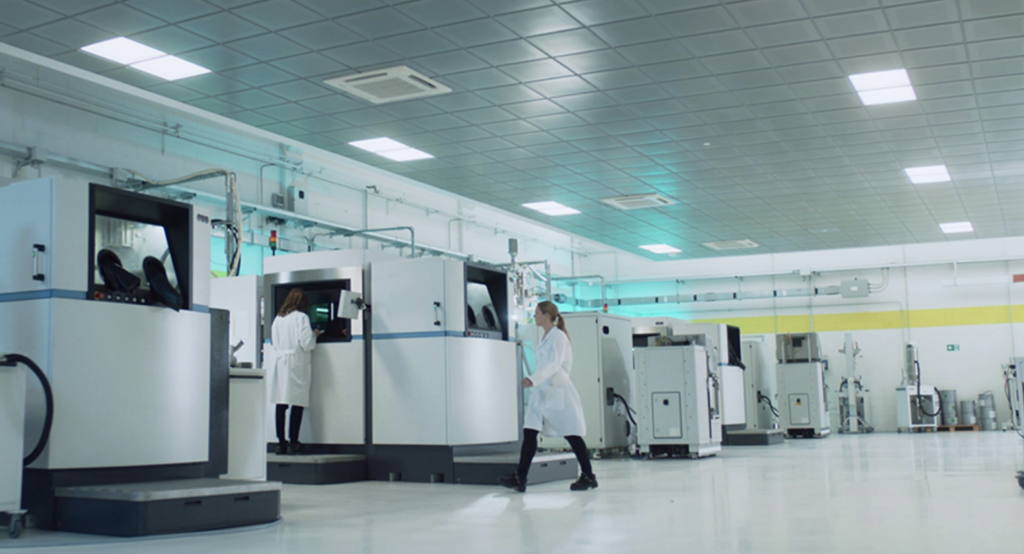 A BEAMIT facility. Image courtesy of BEAMIT. As a GE Additive customer, BEAMIT operates Mlab, M2 and X Line laser powder bed fusion (LPBF) systems along two Q10plus electron beam melting machines. With the latest addition, it will be able to 3D print both large batches and large parts. The company already has five NADCAP accreditation and is working on three more, as well as the necessary ISO 14001, ISO 45001 and EASA part 21 pathways. By partnering with GE Additive, it aims to industrialize the equipment, linking it to post-processing equipment.
Thanks to its backing by Sandvik, BEAMIT is quickly becoming a powerhouse in industrial production. Once it further qualifies LPBF for serial production for aerospace customers, it will likely be able to expand even more. This likely means more acquisitions and the realization of its "one-stop shop" strategy. Meanwhile, competitors like Nikon’s Morf3D may be making similar moves. The post BEAMIT Expands Metal 3D Printing Fleet with GE Additive's M Line appeared first on 3DPrint.com | The Voice of 3D Printing / Additive Manufacturing. |
| You are subscribed to email updates from 3DPrint.com | The Voice of 3D Printing / Additive Manufacturing. To stop receiving these emails, you may unsubscribe now. | Email delivery powered by Google |
| Google, 1600 Amphitheatre Parkway, Mountain View, CA 94043, United States | |
